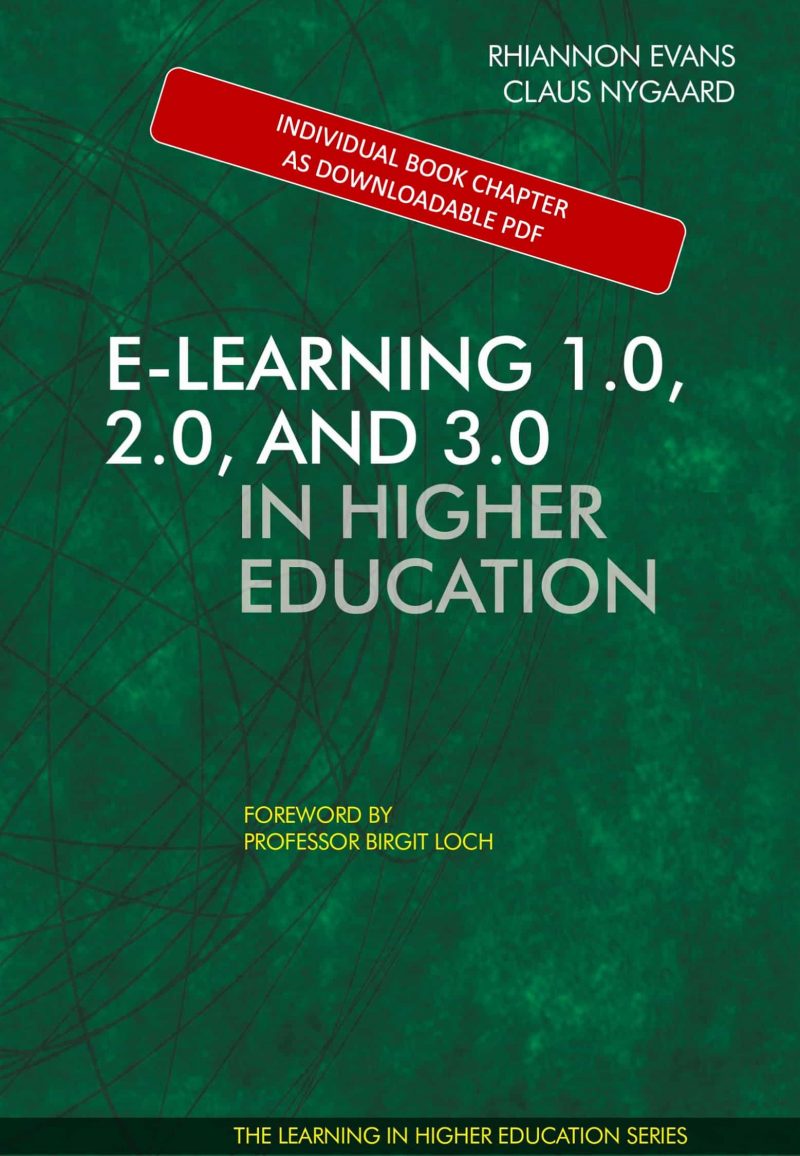Book Chapter: E-learning as a strategy for improving university students’ learning outcomes
NOTICE!!! This is CHAPTER 2 from the book E-learning 1.0, 2.0, and 3.0 in Higher Education. When you make this purchase you get immediate access to download CHAPTER 2 in PDF-format. This is NOT the physical book.
E-learning as a strategy for improving university students’ learning outcomes
By professor Claus Nygaard
Purchase and download this chapter directly in PDF-format
With this chapter, I contribute to the book E-learning 1.0, 2.0, and 3.0 in Higher Education as I discuss ways in which e-learning can be used as a strategy for improving university students’ learning outcomes.
In the chapter, I connect three important aspects of university education:
1) e-learning,
2) learning outcomes, and
3) curriculum design.
My aim is to inspire a discussion of ways in which we can use an e-learning strategy to improve students’ learning outcomes. It is a conceptual chapter. This means that I do not report from a practical curriculum design example, where e-learning technologies were used. Instead, I suggest a typology for e-learning which can be used to reflect on your own curriculum design and e-learning practices.
Reading the chapter, you will:
1. be presented with a central typology for e-learning, which distinguishes between e-learning 1.0, 2.0 and 3.0;
2. be introduced to learning theory and discussions of how different approaches to learning may have implications for your understanding of students’ learning outcomes.
3. be invited to reflect on your own curriculum design when using e-learning to improve students’ learning outcomes.
E-learning strategy
The chapter has three sections.
In the first section, I present a central typology of e-learning, distinguishing between e-learning 1.0, 2.0, and 3.0. This typology guides my further discussion of both learning outcomes and curriculum design. It helps you in formulating your own e-learning strategy.
In the second section, I conceptualise learning and learning outcomes. I do so to present a theoretical terminology, which can guide the discussion of ways in which learning outcomes may be improved.
In the third section, I present a central model for designing the e-learning curriculum, which may inspire to use e-learning in different ways to improve university students’ learning outcomes.
The chapter is included in the book:
Rhiannon Evans & Claus Nygaard (Eds.), E-learning 1.0, 2.0, and 3.0 in Higher Education, Libri Publishing Ltd., Oxfordshire, UK, pp. 23-43.
Only logged in customers who have purchased this product may leave a review.



Reviews
There are no reviews yet.